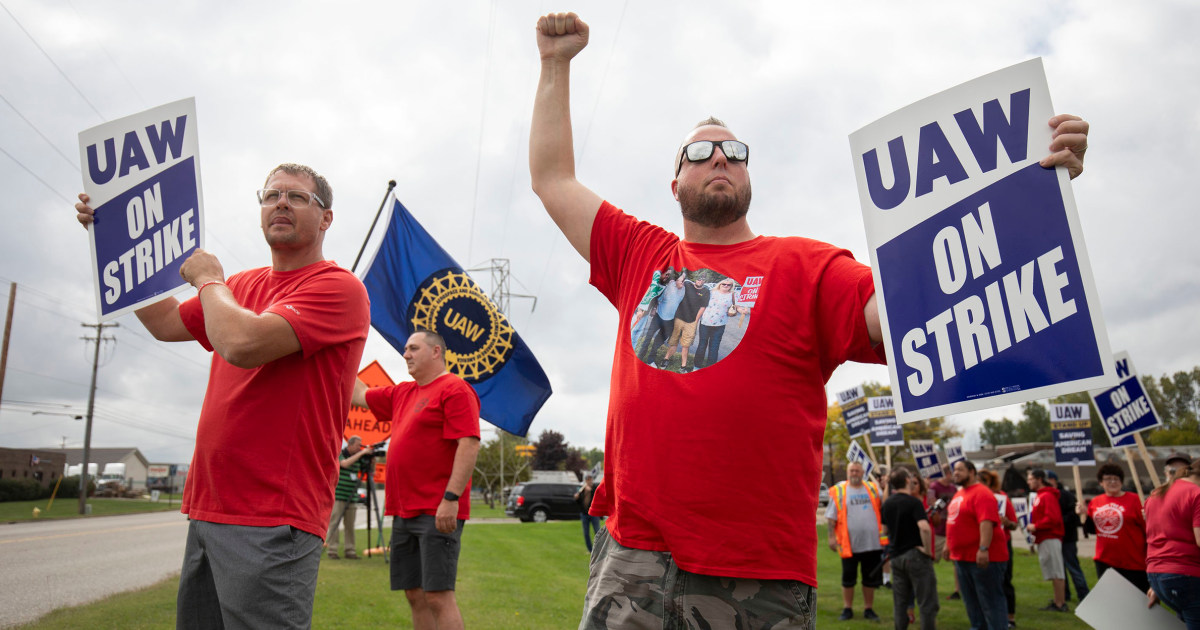
White said he saw an opposite impact on management. “When you’re facing an agency that is openly pro-union, it makes it more difficult for employers to make and act on decisions that are lawful but that they don’t want to be perceived as unlawful,” he said.
Kayla Blado, director of the Office of Congressional and Public Affairs at the NLRB, defended the agency’s record under Biden.
“The National Labor Relations Act is a law that protects workers’ rights,” she said in a statement, referring to the 1935 measure establishing the agency. Abruzzo “has supported her staff in robustly effectuating those protections by educating workers on their rights, and employers and unions on their obligations, as well as by asking the Board and courts to apply the National Labor Relations Act as Congress intended,” she said.
Pendulum swings
“They’ve constantly pushed the envelope as to where their authority is,” Ed Egee, who held Blado’s role at the agency under Trump, said of the current NLRB. “That’s why they’re going to have problems in federal courts on some of these issues.”
Last year, the board released a rule that revived an Obama-era measure making it easier to go after companies for labor violations by franchisees and contractors. A federal court struck it down this year, and the NLRB dropped its appeal in July. In June, the Supreme Court ruled for Starbucks in a case that tightened standards for issuing court orders protecting workers from retaliation while organizing.
The resurgent U.S. labor movement has also seen high-profile defeats — especially in the South, where organizers face higher hurdles and union support is softer. Nationwide, public backing for unions is at record highs and the number of workers who organized for the first time last year hit the highest annual level since 2000. Still, union membership rates have continued to fall as many nonunion workers entered the labor force.
Celine McNicholas, like Blado and Egee, directed the NLRB’s Office of Congressional and Public Affairs, serving under the Obama administration. The Biden-era agency “has undone the damage of the Trump board in certain instances,” she said, but not as aggressively as perceived.
There’s going to be a lot more strikes, a lot more work actions, or the labor movement is going to die.
Kate Bronfenbrenner, Cornell University
“They have not, in terms of precedent-setting matters, unchecked the boxes” across the board — like Trump-era rules letting employers restrict workers’ use of company email for organizing and to discipline employees in a new union before contract talks — said McNicholas, who is now the director of policy and general counsel at EPI Action, part of the left-leaning Economic Policy Institute think tank.
As LeRoy sees it, “the Biden NLRB is a direct response to the Trump NLRB.”
In 2019, it overruled 70 years of precedent to give employers more leeway to make midcontract alterations to unfixed rules and policies. As the Trump White House did with many agencies, it proposed cutting the NLRB’s budget — which was flat for nearly a decade until the 2023 fiscal year, lagging behind inflation — but Congress declined to do so.
Trump also oversaw a drop in union election petitions. “When you know that you have a board that is particularly hostile to workers, the logical, sensical thing of the organizers is to think, ‘Well, I don’t want this question to come before this board,’” McNicholas said.
What comes next
The last two administrations’ labor records are facing scrutiny in the 2024 race.
Teamsters President Sean O’Brien spoke at the Republican National Convention last month. Before becoming Trump’s running mate, Sen. JD Vance, R-Ohio, visited striking UAW workers last fall, weeks after Biden did the same.
Harris, meanwhile, drew strong union support after stepping in to lead the Democratic ticket. And both campaigns are competing for Black voters, who are more likely to be union members than any other racial or ethnic group.
While some analysts expect a Harris administration to be more business-friendly than Biden’s, others predict continuity. “She will finish the job,” SEIU President April Verrett said on a recent press call.
No matter who wins the election, challenges to the NLRB remain. Recent Supreme Court decisions, including the overturning of a 40-year precedent in a decision that slashed federal agencies’ power, could weaken the NLRB.
Egee, who now is the vice president of government relations and workforce development at the National Retail Federation, a trade group that filed an amicus brief in that case, said the outcome could bring consistency. “The NLRB constantly changing is not good for business stability,” he said.
The agency also faces challenges to its constitutionality and enforcement powers from the likes of SpaceX, Trader Joe’s and Amazon, efforts that coincide with a broader conservative push to curtail the administrative state.
Blado noted that the National Labor Relations Act was found constitutional in 1937 and has faced corporate pushback for decades.
“While the current challenges require the NLRB to expend scarce resources defending against them,” she said, “we’ve seen that the results of these kinds of challenges is ultimately a delay in justice, but that ultimately justice does prevail.”
The NLRB’s fate could be pivotal for the labor movement, Bronfenbrenner said. If its clout weakens, “there’s going to be a lot more strikes, a lot more work actions, or the labor movement is going to die,” she predicted. “It’s either going to become more militant or just give up.”